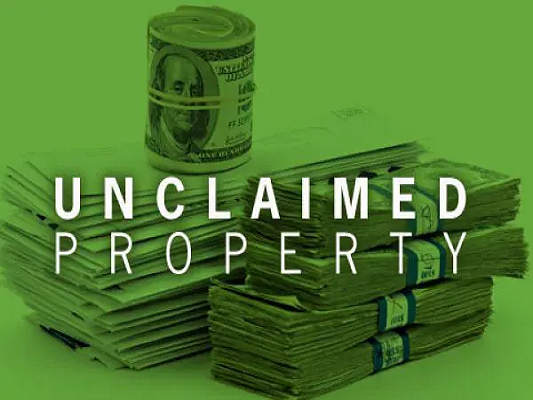|
by Amy Kleinschmit, Chief Compliance Officer
Credit Unions – claim your $$ A recent search of the unclaimed property in both South and North Dakota showed money STILL waiting for some Dakota credit unions to claim. South Dakota check here: https://southdakota.findyourunclaimedproperty.com/app/claim-search North Dakota check here: https://land.nd.gov/UnclaimedProperty/ Some things I noticed when searching for credit union’s unclaimed property in ND and SD, not everything is reported the same way so try different search terms. For example, “ABC credit union”, “ABC Fed Credit Union”, “ABC Federal Credit Union” “ABC CU” and “ABC FCU” may turn up different results, but all for the same credit union. Consider just searching by “ABC” and drop the credit union as not everything was reported with the credit union in the name. Also, try just “credit union” to catch all the variations of the credit union’s name, especially if you have a long name. When I typed in “credit union” for North Dakota it returned 459 matches and 267 for South Dakota! Also, if there is a space in your name, try searching without the space. For example, “Rolling hills credit union” might also try searching “Rollinghills.” Finally, be sure to search for credit unions that have been merged into your credit union and also any prior names that your credit union operated under. ND Unclaimed Property Division The North Dakota Department of Trust Lands’ Unclaimed Property Division recently issued this newsletter which covers what is “New for 2022”. The newsletter provides reminders on due diligence requirements, reciprocity, remittance information, records retention and negative reports. It also includes a number of useful links – including links to sample due diligence forms. As a reminder, last year (2021) North Dakota enacted the Revised Uniform Unclaimed Property Act which can be found under NDCC 47-30.2. A few highlights from this rule of when property is presumed abandoned, unless there is an “indication interest in property by the apparent owner” (which is explained below). Money order – presumed abandoned (7) seven years after issuance (unless “indication of interest”). "Money order" means a payment order for a specified amount of money. The term includes an express money order and a personal money order on which the remitter is the purchaser. A cashier's check or certified check – presumed abandoned two years after issuance (unless “indication of interest”). "Cashier's check" means a check that: Is purchased by a remitter and made payable to a designated payee; Is signed by an officer or employee of the financial organization; Authorizes payment of the amount shown on the check's face to the payee; Is a direct obligation of the financial organization; and Is provided to a customer of the financial institution or acquired from the financial institution for remittance purposes. Uniform Transfers to Minors Act (UTMA) Account – presumed abandoned three years after the later of: the date a second consecutive communication sent by the holder to the custodian of the minor on whose behalf the account was opened is returned undelivered to the holder by the United States postal service; or the date on which the custodian of the minor is required to transfer the property to the minor or the minor's estate in accordance with UTMA state laws. (Unless “indication of interest”). Accounts - A payroll card or a demand, savings, or time deposit, including a time deposit that is automatically renewable, (5) five years after the date of maturity of the time deposit or the date of the last indication of interest in the property by the apparent owner, whichever is earlier, provided a time deposit that is automatically renewable is deemed matured on its initial date of maturity unless the apparent owner has consented in a record on file with the holder to renewal at or about the time of the renewal. If an apparent owner has another established account with the credit union and has “demonstrated interest” in any account, then all accounts must be considered active. If there is “an indication of an apparent owner's interest in property” this would determine when the property is presumed abandoned (it is the later of either - the number of years or the “indication of interest”). "Apparent owner" means a person whose name appears on the records of a holder as the owner of property held, issued, or owing by the holder. Indication of interest includes a record communicated by the apparent owner to the holder or agent of the holder concerning the property or the account in which the property is held. This also includes an oral communication by the apparent owner to the holder or agent of the holder concerning the property or the account in which the property is held, if the holder or its agent contemporaneously makes and preserves a record of the fact of the apparent owner's communication. Indication of interest includes the presentment of a check or other instrument of payment of a dividend, interest payment, or other distribution, or evidence of receipt of a distribution made by electronic or similar means, with respect to an account, underlying security, or interest in a business association. Also, included is activity directed by an apparent owner in the account in which the property is held, including accessing the account or information concerning the account, or a direction by the apparent owner to increase, decrease, or otherwise change the amount or type of property held in the account. “Indication of interest” also can be a deposit into or withdrawal from an account at a financial organization, including an automatic deposit or withdrawal previously authorized by the apparent owner other than an automatic reinvestment of dividends or interest. There is also the very broad - any other action by the apparent owner which reasonably demonstrates to the holder that the apparent owner knows that the property exists, which is considered an indication of interest under this rule. New section NDCC 47-30.2-31, addresses dormancy charges. A holder may deduct a dormancy charge from property required to be paid or delivered to the administrator (State) if the following criteria are met. There must be an enforceable written contract between the holder and the apparent owner authorizing imposition of the charge for the apparent owner's failure to claim the property within a specified time. Also, the holder must regularly impose the charge and regularly does not reverse or otherwise cancel the charge. Charges authorized under this rule may only be charged until the respective property is deemed abandoned. There continues to be a notice requirement for abandoned property. The holder of property presumed abandoned shall send to the apparent owner notice by first-class United States mail not more than one hundred twenty days before filing the report if: the holder has a valid address for the apparent owner and the value of the property is twenty-five dollars or more. If an apparent owner has consented to receive electronic mail delivery from the holder, the holder shall send this notice both by first-class United States mail to the last-known mailing address and by electronic mail, unless the holder believes that the apparent owner's electronic-mail address is invalid. This notice must include the heading - "Notice. The State of North Dakota requires us to notify you that your property may be transferred to the custody of the North Dakota unclaimed property administrator if you do not contact us before (insert date that is thirty days after the date of this notice)." New NDCC 47-30.2-27 details what needs to be included in this notice. The holder’s report to the administrator (state) must be filed before November 1st of each year. As always, DakCU members may contact Amy Kleinschmit with any compliance related questions. Comments are closed.
|
The MemoThe Memo is DakCU's newsletter that keeps Want the Memo delivered straight to your inbox?
Archives
July 2024
Categories
All
|
|
Copyright Dakota Credit Union Association. All Rights Reserved.
2005 N Kavaney Dr - Suite 201 | Bismarck, North Dakota 58501 Phone: 800-279-6328 | [email protected] | sitemap | privacy policy |





